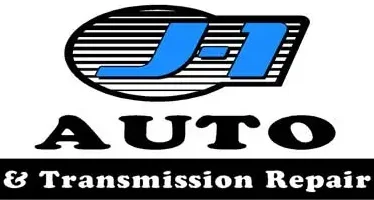Towing services Breakdown towing assistance Engine failure towing Seabrook towing and recovery vehicle maintenance
J1Auto and Transmission Repair
Transmission Diagnostic Services
The transmission is one of the most important components of your vehicle, responsible for transferring power from the engine to the wheels. When it begins to malfunction, it can lead to a host of issues that may affect your vehicle’s performance. Transmission problems can be costly if left untreated, but early detection through transmission diagnostic services can help prevent major repairs. In this blog, we’ll explain what transmission diagnostic services are and why they are essential for your vehicle’s long-term health.
What Are Transmission Diagnostic Services?
Transmission diagnostic services involve the use of specialized tools and technology to identify issues with your vehicle’s transmission system. Technicians perform a series of tests to check for any signs of wear, malfunction, or failure in the transmission components. These diagnostics can pinpoint issues like low fluid levels, electrical problems, or internal mechanical damage, allowing for timely repairs.
Why Are Transmission Diagnostic Services Important?
1. Early Detection of Issues
A small transmission problem can quickly escalate into a much larger and more expensive issue if not addressed early. Transmission diagnostic services help identify minor issues before they become major problems, saving you from costly repairs or even a complete transmission replacement.
2. Prevents Vehicle Breakdown
Transmission issues, if left unchecked, can lead to complete transmission failure, leaving you stranded on the road. Diagnostic services help catch these problems early, reducing the risk of a breakdown and keeping your vehicle running smoothly.
3. Improves Vehicle Performance
A well-functioning transmission ensures smooth gear shifting, optimal engine performance, and better fuel efficiency. Diagnostic services can help resolve transmission-related issues that may affect your vehicle’s overall performance, ensuring a more comfortable and efficient driving experience.
4. Cost Savings
While transmission diagnostic services may involve an upfront cost, they can actually save you money in the long run. By identifying and fixing problems early, you avoid the high costs associated with major transmission repairs or replacements. Regular diagnostics also extend the life of your vehicle, allowing you to get more years of service from your car.
5. Prevents Unnecessary Repairs
Sometimes, the symptoms of a transmission problem may be caused by an issue elsewhere in the vehicle, such as a problem with the engine or electrical system. Through diagnostic services, technicians can pinpoint the exact cause of the issue, ensuring that only the necessary repairs are made and preventing unnecessary parts replacements.
Common Signs You May Need a Transmission Diagnostic Service
While transmission problems may not always be immediately obvious, there are a few warning signs that could indicate your vehicle needs a diagnostic check:
-
Slipping Gears: The transmission unexpectedly shifts gears or has trouble staying in gear.
-
Delayed or Rough Shifting: You notice a delay or roughness when shifting gears.
-
Unusual Noises: Grinding, whining, or clunking sounds when the vehicle is in gear.
-
Fluid Leaks: Noticeable spots of red or brown fluid under your car, indicating a transmission fluid leak.
-
Warning Lights: The “check engine” or “transmission” light appears on your dashboard.
-
Decreased Performance: Poor acceleration or difficulty maintaining speed.
What Happens During a Transmission Diagnostic Service?
During a transmission diagnostic service, technicians use a variety of tools and equipment, such as:
-
On-Board Diagnostics (OBD) Scanners: These devices connect to your vehicle’s computer system to identify trouble codes that may indicate transmission issues.
-
Fluid Checks: The technician checks the level, color, and consistency of your transmission fluid, as low or contaminated fluid can be a sign of a problem.
-
Test Drives: Technicians often take your vehicle for a test drive to observe how the transmission performs under normal driving conditions and identify any issues that may not show up during a stationary inspection.
-
Mechanical Inspections: In some cases, a physical inspection of the transmission may be required to check for wear or damage to components like gears, seals, and clutches.
How Often Should You Have a Transmission Diagnostic Service?
It’s a good idea to have your vehicle’s transmission inspected regularly, typically every 30,000 to 60,000 miles. However, if you notice any of the warning signs mentioned earlier, it’s important to have your transmission diagnosed immediately, even if you haven’t reached the recommended service interval.
Conclusion
Transmission diagnostic services are an essential part of vehicle maintenance that can help ensure your car operates smoothly and efficiently. By identifying and addressing issues early, these services can save you money, prevent breakdowns, and extend the life of your vehicle. Regular diagnostic checks are a smart investment in the health and longevity of your car’s transmission. If you’re experiencing any of the symptoms of transmission trouble, don’t wait—schedule a diagnostic service today and keep your vehicle running like new.
TOTAL PEACE OF MIND
Serving Seabrook, Beaufort, and Surrounding Areas
We provide expert auto repair and maintenance services in Seabrook and surrounding areas to keep your car running at its best. Our skilled technicians ensure top performance, quick fixes, and full repairs with exceptional service.
Local Mechanic
After Service Support
Complete Repair
